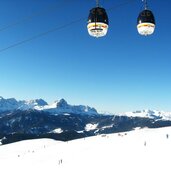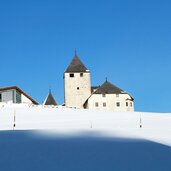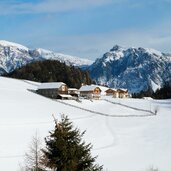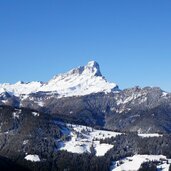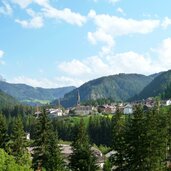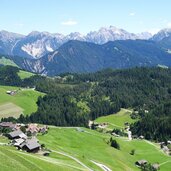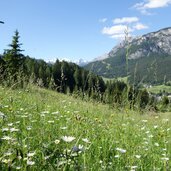Ciastel de Tor, home to the Museum Ladin, rises proudly in San Martino in Badia, one of the five municipalities in the Ladin Val Badia
Ladin is the third official language in South Tyrol, alongside German and Italian, but it is spoken in only a few municipalities in the heart of the Dolomites. This is where the Ladin Cultural Institute comes in, which was established in the main village of San Martino in Badia to promote the Ladin language and culture. It was named after the linguist Micurà de Rü.
The large municipality is located in the lower part of the Val Badia, just beyond the predominantly German-speaking municipality of San Lorenzo di Sebato. From there, the valley gradually transitions into its upper part, which is known as Alta Badia far beyond borders. The local mountain is the imposing Sass de Putia, whose ascent - if you are an experienced mountaineer - should be at the very top of your holiday list.
Down in the valley, Thurn Castle, known as Ćiastel de Tor, overlooks the main village of San Martino and is home to the Museum Ladin. It tells the story of the language and traditions of Ladinia, as well as its prehistory, economy, and local crafts. The other three hamlets are spread across the surrounding slopes of the Val Badia.
These include the mountain village of Piccolino, Antermoia at an altitude of over 1,500 metres, and Longiarù, which is known for its pristine Mill Valley with working watermills along the Rio Seres stream. The beauty of the Puez-Odle Nature Park and the hamlets on the slopes make it an excellent area for hiking. Your feet may get tired on the circular trail to the "Viles" or on a hike to the Passo delle Erbe, but the clear mountain air and cool summer days are invigorating.
In winter, it's time to hit the slopes: The Piculin Cable Car in Piccolino connects San Martino in Badia to the Plan de Corones, while the second skiing area, Alta Badia with its legendary Sellaronda circuit, can be reached by shuttle service. The village itself has a racing toboggan run and the more leisurely Börz run near Antermoia, as well as several cross-country ski tracks with views of Mt. Sass de Putia, known as Sas de Pütia in Ladin, and as Peitlerkofel in German.


